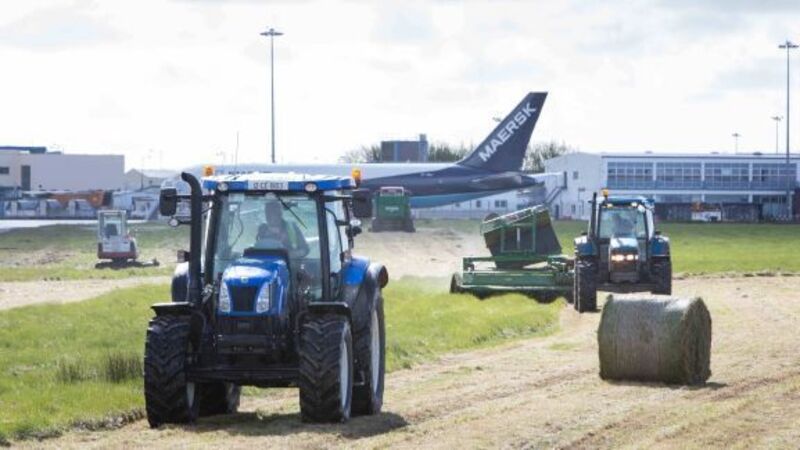Analysis reveals 2018 silage surprises

Balancing diets for cattle this year will bring many challenges. New, unfamiliar ingredients will be fed, and increased concentrate rates will be required where forage is scarce.
Some will also have to feed animals more than once per day, to allocate available feeds while preventing digestive upsets. By all accounts, there will also be a lot more mixer wagons operating in Ireland this winter.
Silage analysis is starting around the country. I have quite a few done over the last few weeks, and the range in quality is huge, with DMDs ranging from 58 to 77.
Getting silage tested before formulating diets for the coming winter is critical, because the silage is not testing like a normal year.
Many farmers will test their silage for dry matter, protein, energy, pH etc this year, and will seek advice as to how best they can balance it.
Many are convinced that their silage is better than the results that they have received back from the lab, or that I have shown them on farm with my mobile NIR.
The vast majority will be dealing with dry and in many cases over-dry silages this winter. This makes clamp management difficult, if mould and spoilage are to be prevented.
Feeding in the dark
I would love to know why so many farms still don’t get silages tested!
A more scientific approach needs to be taken on farms, to ensure better nutrition for stock and to prevent unnecessary costs due to over-feeding or under-feeding of particular nutrients.
Even knowing which pit or batch of bales to feed individual animal groups will aid in achieving optimum performance and profit.
Would you ask your accountant to file your tax returns without giving him your purchase receipts and sales records? Feeding silage without an analysis is similar.
Silage mineral profiles
I have also seen a good few mineral profiles for silage over the last month.
Testing for minerals in your silage is highly recommended, to establish deficiencies and begin diet balancing for particular animal groups.
Cross-referencing these results with milk or blood analysis, and getting minerals to match these, is well worth doing. Remember that all of this mineral data helps to identify deficiencies on your farm, and will help you to design supplementation, which may also include what your soil requires.
It will also help to explain any animal health and performance issues which may be occurring on farm.
Silage makes up the predominant feed source on almost all Irish farms every winter. If you know what level of minerals and vitamins an animal requires (based on its breed, age, weight, sex and productivity etc) then you can formulate nutrient programmes to supply them with any elements deficient in the base forages on your farm.
One worrying observation so far this autumn in mineral results for silage is the high levels of antagonists, namely lead, aluminium and iron.
These will tie up elements, particularly manganese, copper, zinc and selenium.
Many have a perception as to what particular mineral symptoms look like, and have tried lots of things, in the quest for a solution.
It has been well established that particular areas of the country have particular mineral deficiencies, this information needs to be used when purchasing mineral supplements.
Minerals for finishing
How many times have I been told that finishing cattle require no minerals?
This perception is totally inaccurate.
For instance, copper is a natural growth promoter, calcium and phosphorous make up the animal’s bone structure and are essential for saliva production.
Zinc helps to prevent lameness in intensively fed animals, and Vitamin E helps an animal’s immune response. Vitamin E is very important to maintain an efficient immune system.
Concentrating more on mineral supplementation may be one way to achieve better animal performance, less animal losses and fewer vet calls.
This may be of considerable use during the dry period on both dairy and suckler units, where issues around calving and, early lactation could be prevented with improved mineral quality.
In finishers and young stock diets, the supply of sufficient calcium and phosphorous alone can help to prevent skeletal injuries such as broken bones etc.
Return on investment
A silage mineral analysis is money very well spent. Doing one every few years will calibrate the mineral profile of your grass on the farm.
A cheap mineral might be a total waste of time, if it doesn’t balance your forage sources.
The correct mineral premix for your stock will help to optimise performance and minimise animal losses. Try to buy a mineral based on what it will deliver to your stock, rather than trying to save money by buying any old mineral.
Mineral feeding rate guidelines on the bag should be followed carefully. These feed rates are intended to deliver the required mineral elements for the target animals.
Those feeding maize silage, wholecrop and beet, in particular, need to supplement with sufficient phosphorous.
With more straw being fed to stock this winter, an adjustment is needed in mineral supplementation to take account of this.












